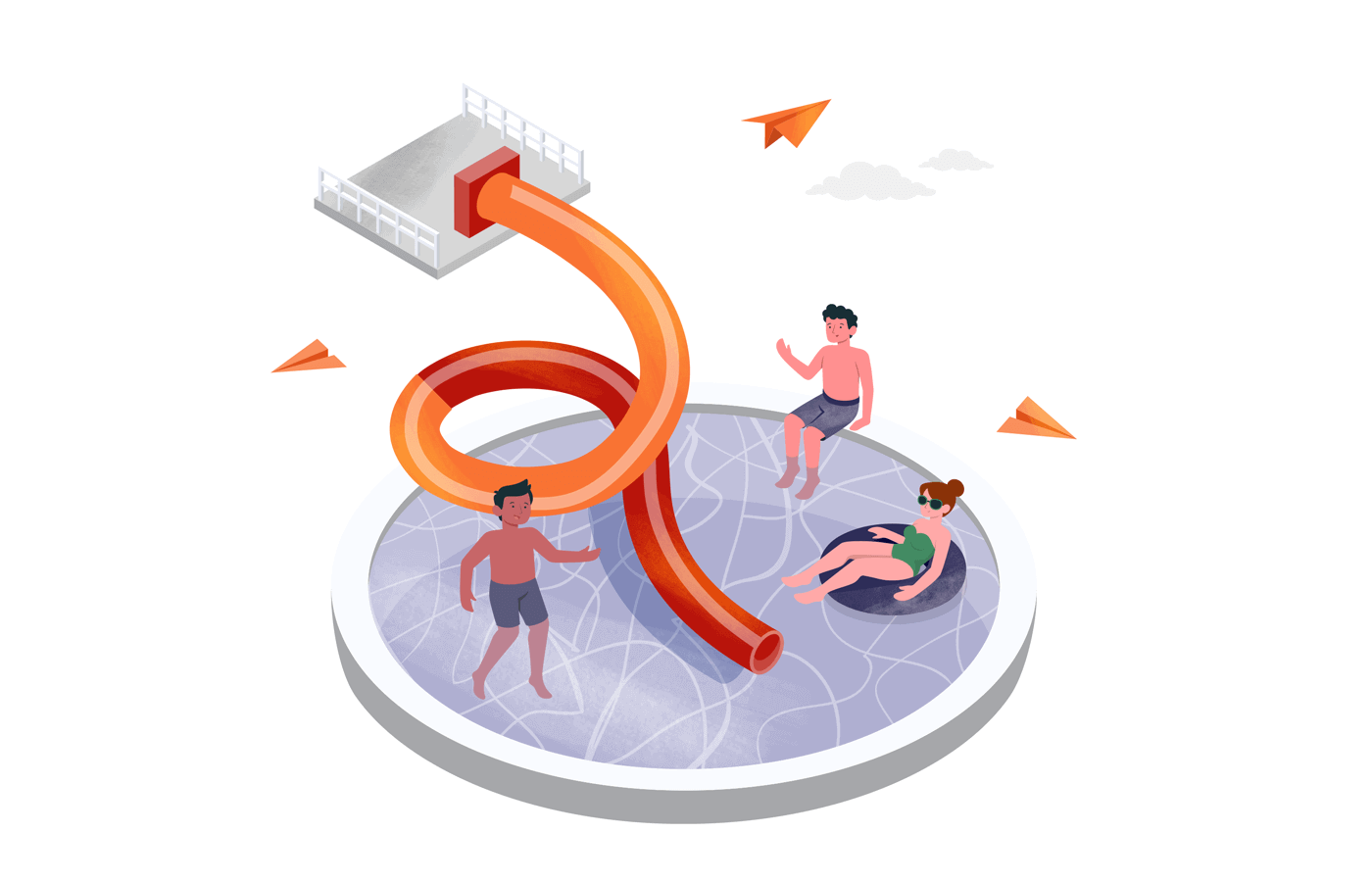Okay, I get it. “Email sales funnel” – the phrase probably makes you roll your eyes a little. It sounds like another marketing buzzword, right? But trust me on this one.
See, I used to think my email list was working for me. I had subscribers signing up, but then… things would go quiet. The subscriber engagement just wasn’t there. Conversions felt totally random. I knew I needed a system, something that felt less like talking to a brick wall and more like having a real conversation.
That’s where building a real email sales funnel changed everything. It’s how I finally started to see real subscriber engagement and turn those forgetful subscribers and trial users into happy, paying customers. Want to see how it works?
What is an Email Marketing Funnel?
An email marketing sales funnel is like a roadmap for your potential customers. You use email marketing to guide them through each stage, from just learning about your brand to becoming loyal customers.
I’m talking about the entire process! Each step, or email marketing funnel stage, is designed to keep your email subscribers engaged and nudge them closer to making a purchase (and sticking around for more!).
Now, let’s see what all the email marketing funnel stages look like:
Awareness Stage
Think of the awareness stage as your first impression. Your goal is to capture leads and introduce yourself to your target audience. The best way to do this is to offer something valuable in exchange for an email address. Think ebooks, checklists, or webinars offered through a simple opt-in form or sign-up form.
Interest Stage
You’ve got their attention, now keep them interested! The interest stage is all about giving your audience relevant content that addresses their pain points and shows you know your stuff.
You can do this through lead nurturing, using email automation to send targeted email sequences. For example, a welcome series is a great way to build a relationship and establish trust with new email subscribers.
Consideration Stage
At this point, potential customers are actively considering their options. Your marketing efforts should focus on highlighting the amazing benefits of your products or services. Show them how you solve their problems! Personalized content, like case studies, testimonials, or product demos, can be very persuasive.
Conversion Stage
This is the exciting part – turning subscribers into paying customers! Your email marketing should make it super easy for people to buy. Use strong calls-to-action (CTAs), clear pricing, and maybe even a tempting limited-time offer to encourage action.
One of the great email marketing funnel examples here is using abandoned cart emails to bring back those who almost bought something.
Retention Stage
Don’t forget about your customers after they’ve made a purchase! The retention stage is all about building loyalty and turning one-time buyers into regulars. Think retention emails with exclusive discounts for existing customers, asking for customer feedback, or inviting them to join loyalty programs.
By keeping an eye on your email analytics, like click-through rates (CTR) and open rates, you can see what’s working and adjust your email marketing strategy based on customer behavior. This helps optimize your conversion rates even further.
Email Marketing Funnel Examples
Let’s dive into some email funnel examples to illustrate how each stage works in practice:
Gaining Recognition in the Awareness Stage
A new subscriber has just joined your email list – congrats! Now, deliver the valuable content they signed up for, such as a free ebook, checklist, or discount code.
This email is crucial for establishing a positive first impression and reinforcing the value you offer. Direct them to other relevant resources on your website or blog to further pique their interest.
In its welcome email, Athletic Brewing delivers the promised first-order discount and invites to purchase (or at least explore the product range):
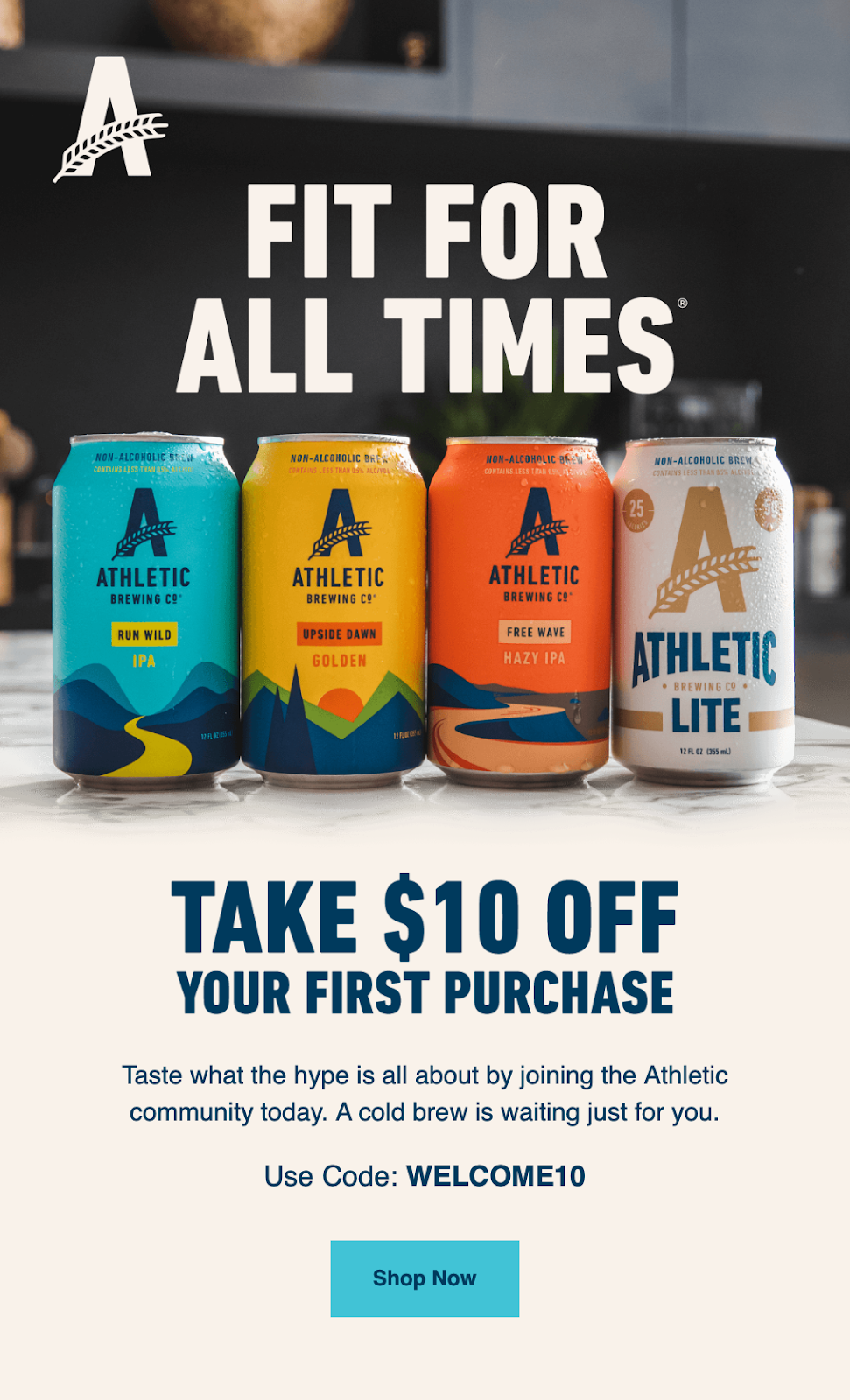
| Type of email | Welcome email with lead magnet delivery |
| Goal | Capture leads and deliver promised value |
Building Connections in the Engagement Stage
Keep those new subscribers engaged with a series of follow-up emails that provide valuable information related to their interests and pain points. This is a prime opportunity to showcase your knowledge and build trust. Drip campaigns work well here, delivering content gradually over time to nurture the relationship.
Here Athletic Brewing chose to introduce its team and show how much work is put into creating its products:

| Type of email | Nurture sequence with educational content |
| Goal | Build relationships and establish expertise |
Building Trust in the Consideration Stage
Prospects are now weighing their options, so it’s time to show them what you can do! Share compelling email funnel examples like customer success stories, case studies, or glowing testimonials. Highlight how your product or service has helped others overcome similar challenges and achieve positive outcomes.
Knowing how well positive reviews work, Athletic Brewing shared a handful of them:

| Type of email | Case study or testimonial email |
| Goal | Demonstrate the value of your product or service |
Driving Action in the Conversion Stage
Give those on the fence a nudge with a compelling offer they can’t refuse! Promote a limited-time discount, a free trial of your product, or a bonus for signing up. Use strong calls-to-action and create a sense of urgency to encourage immediate action.
Athletic Brewing chose the straightforward way and offered a considerable discount on the whole range. The catch? Subscribers need to hurry up to use it!
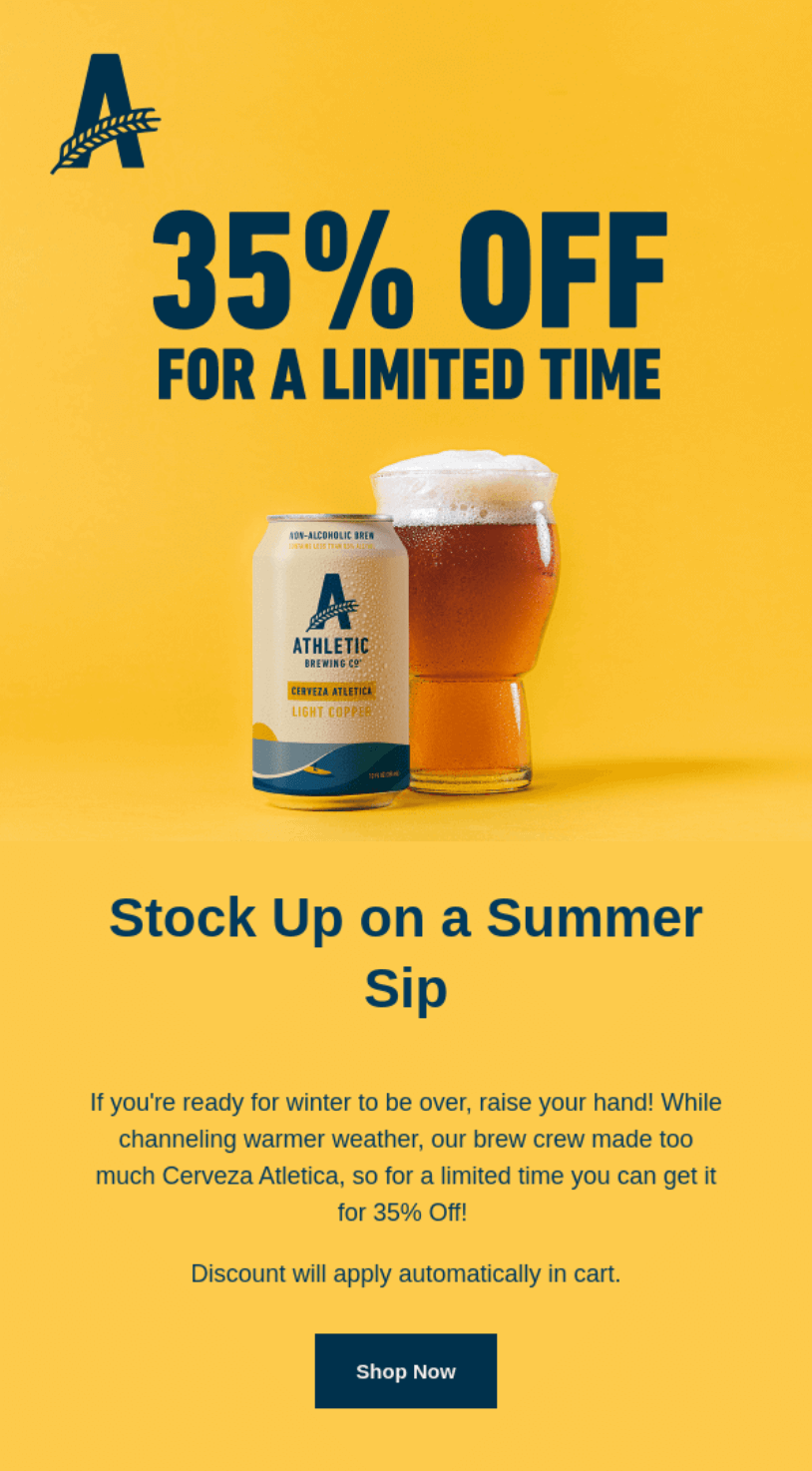
| Type of email | Limited-time offer or free trial email |
| Goal | Convert leads into paying customers |
Cultivating Loyalty in the Retention Stage
Don’t forget about your existing customers! Re-engagement campaigns can reignite interest from those who haven’t purchased in a while.
Consider offering personalized recommendations based on their past purchases or sending exclusive discounts to show your appreciation. Building a strong customer relationship through consistent and relevant communication is key to long-term success.
Here Athletic Brewing chose to reignite the conversation by asking a question and providing an enticing incentive:
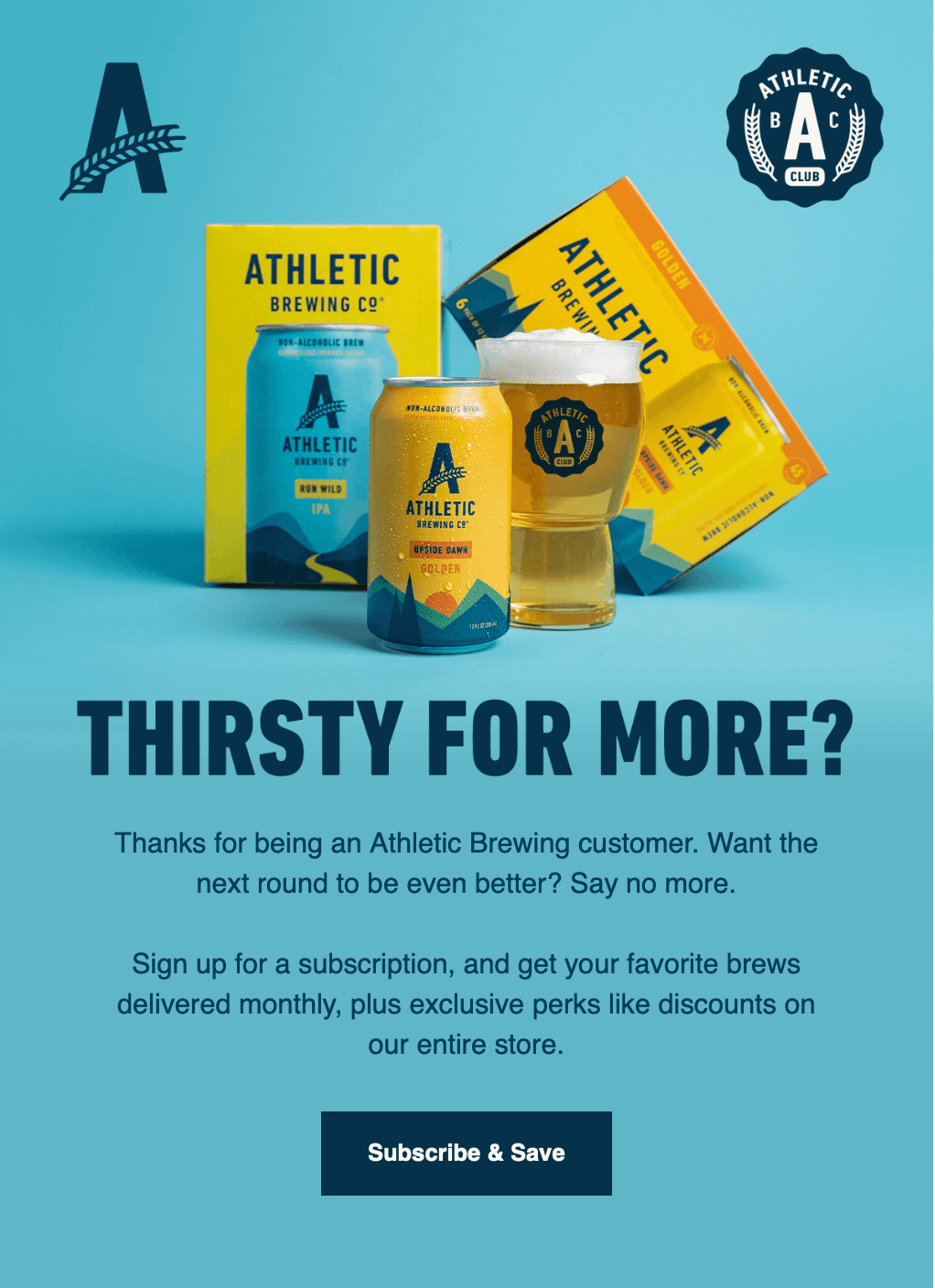
| Type of email | Re-engagement campaign or customer appreciation email |
| Goal | Increase customer lifetime value and build brand loyalty |
How to Build an Email Marketing Funnel
Finally, with some practical examples, let’s discuss building an email marketing funnel for your business.
Map Customer Journey
First, you need to get a visual map of what you want your customer’s journey to look like. The map will help you visualize the process and make it easy to build.
Don’t worry, you won’t need a difficult scheme. A simple visual map is all you need.
For example, here is what GrowthLab’s $400,000 email funnel looks like:
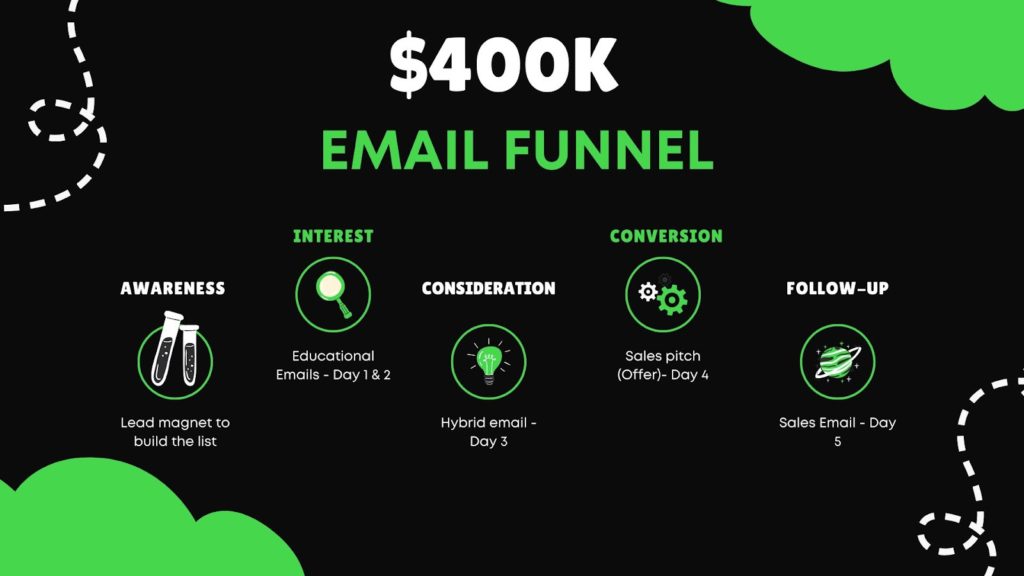
This email funnel is a 5-day email sequence used in a single product launch (no upsells or additional offers) to print six figures in dollars.
When making a funnel map, a critical question to answer is how long you want your funnel to be.
Like the funnels from GrowthLab, there are short funnels that have a 5-day email sequence. There are also long funnels that last a whole year. These could have up to 60 emails in them.
The type of product and offer you run influences the length of your email sequence. That is a one-time offer or multiple offers with upsells.
Gather Leads
The email funnel only triggers when someone joins your email list newsletter.
Hence, a crucial step in creating your email funnel is collecting leads. And to do that, you need some incentives (lead magnets) to draw them in.
There are several ways to use a lead magnet. You can serve your lead magnet through newsletter signup forms and popups on your website or landing page.
Here is an example from NichePursuits:
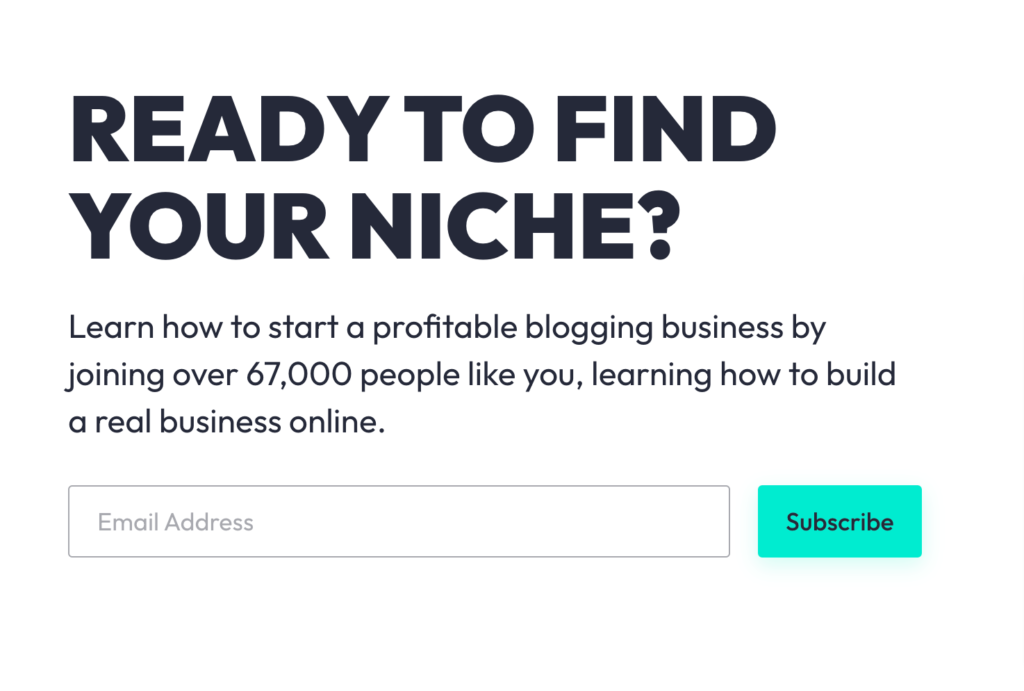
Create Lead Magnets
One of the mistakes people make is creating just a single lead magnet and expecting the best results.
It’s been proven that having multiple lead magnets increases the success of your email marketing campaign.
Plus, this gives you the luxury to split-test your lead magnets and see how each one performs before sticking with the winners.
If you don’t know where to start, here are some lead magnet ideas you can try:
- Free training and webinar;
- Free workbook and worksheet;
- Industry statistics;
- Case studies of past clients;
- Free consultation call;
- Free audit and strategy session, and so on.
You can find more freebie funnel examples here.
Settle on Email Marketing Software
To execute your email funnel, you need email marketing software. There are several of this software in the market.
When choosing an email marketing software, choose one that allows you to set up workflows and autoresponders.
Sender is not only an easy-to-use email design tool.
Sender helps you build workflows for your marketing funnels in minutes.
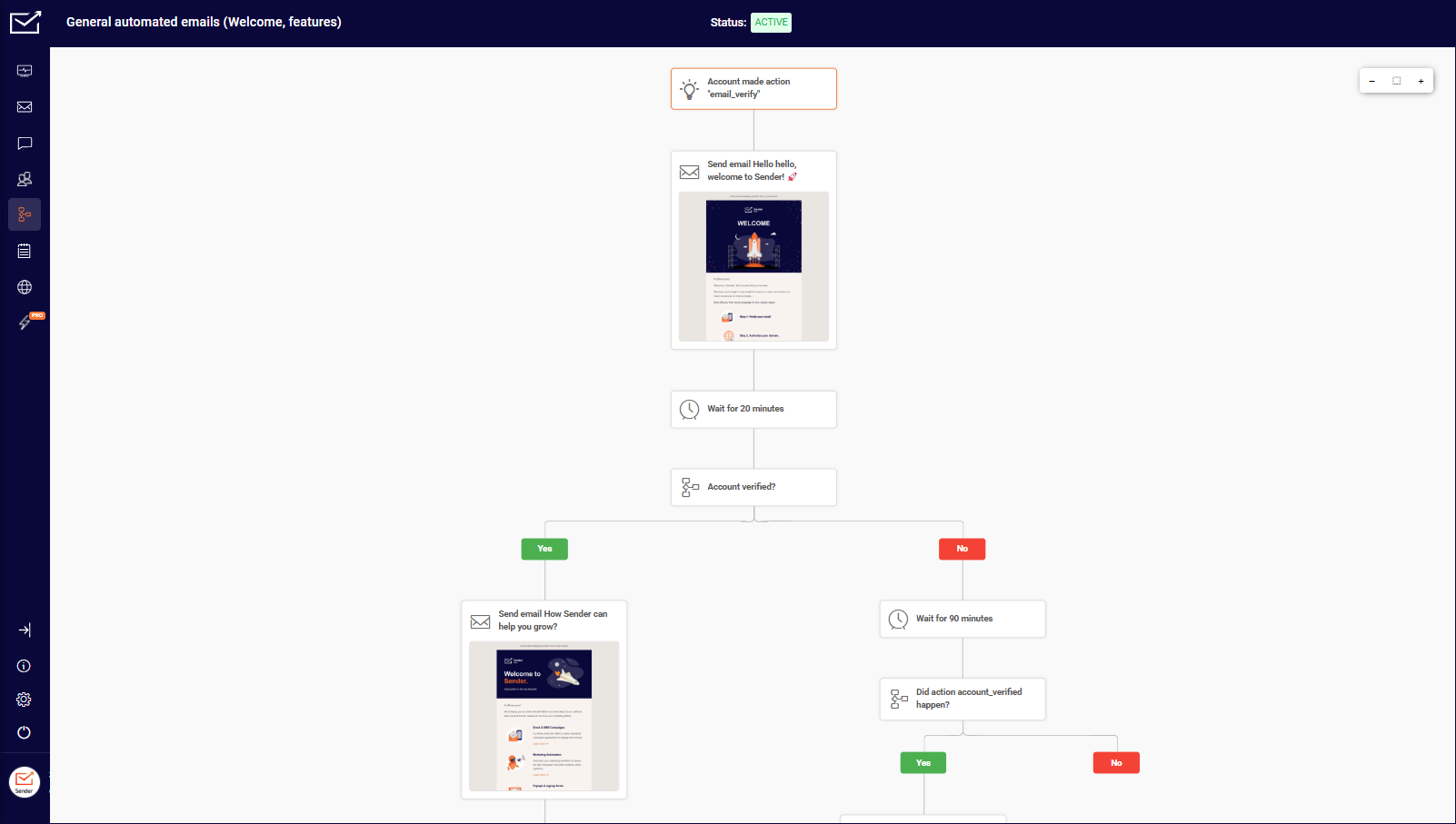
Nurture Leads
The lead-nurturing stage is where you build relationships with your subscribers. You’ve attracted them with your lead magnet and initial welcome email, but they aren’t ready to buy yet. This stage bridges the gap.
Here’s how to nurture your leads effectively:
- Deliver valuable content consistently. Provide useful information related to your lead magnet and eventual product/service. This could be through a series of emails, blog posts, videos, or a combination;
- Segment your audience. Divide your subscribers into smaller groups based on their interests, demographics, or behavior. This allows you to send more targeted content that resonates with each specific segment, leading to higher engagement;
- Personalize your messages. Use the information you’ve collected to personalize the experience for each subscriber. Tailor your content to their specific needs and interests based on their segment or past interactions;
- Build anticipation for your product/service. While you’re providing valuable content, subtly weave in information about your offering. Highlight its benefits and how it solves the problems your audience faces;
- Monitor your results and adjust accordingly. Track your open rates, click-through rates, and conversions. If something isn’t working, don’t be afraid to change your approach. Experiment with different content formats, sending frequencies, and calls to action to find what resonates best with your audience.
Retain Customers
Let’s assume a lead enters your email funnel and becomes a customer. Do you remove them from your list afterward, or do you trigger another series of email funnels to keep them?
The latter is the right step to take.
Create an email sequence that triggers once someone becomes a customer. Also, make one that goes off if someone doesn’t buy from you at the end of the first email funnel. This helps you retain customers and also re-engage hesitant prospects.
Benefits of Email Marketing Funnel
An email marketing funnel helps you automate the communication between you and your prospects, and it works 24/7.
So without any push from you, your email funnel can automatically send important emails to your prospects’ inboxes.
Here are other benefits of building one for your business:
- Simplifies the customer journey. Email funnels automate personalized email sequences based on customer behavior, guiding them from awareness to purchase. This automation ensures the right message reaches the right person at the optimal time;
- Allows for personalization in email marketing. Craft highly targeted emails by personalizing elements like subject lines, greetings, and content. This tailored approach enhances engagement and builds stronger connections with prospects;
- Easy to track. Monitor key metrics at each stage of the funnel, such as email opens, click-throughs, and conversions. This data-driven approach allows you to refine your strategies and maximize your return on investment;
- Boosts customer engagement. Nurture leads effectively with automated email series that provide valuable information and guide them towards conversion. Additionally, utilize follow-up emails to re-engage inactive leads and gather customer feedback.
Key Takeaways: Building Email Marketing Funnel
Building an email marketing funnel is one of my best business decisions ever. It simplifies your email marketing and helps you generate the best ROI from your email list.
If you don’t have one yet, it’s high time you built one for your business.
Want to learn more?

